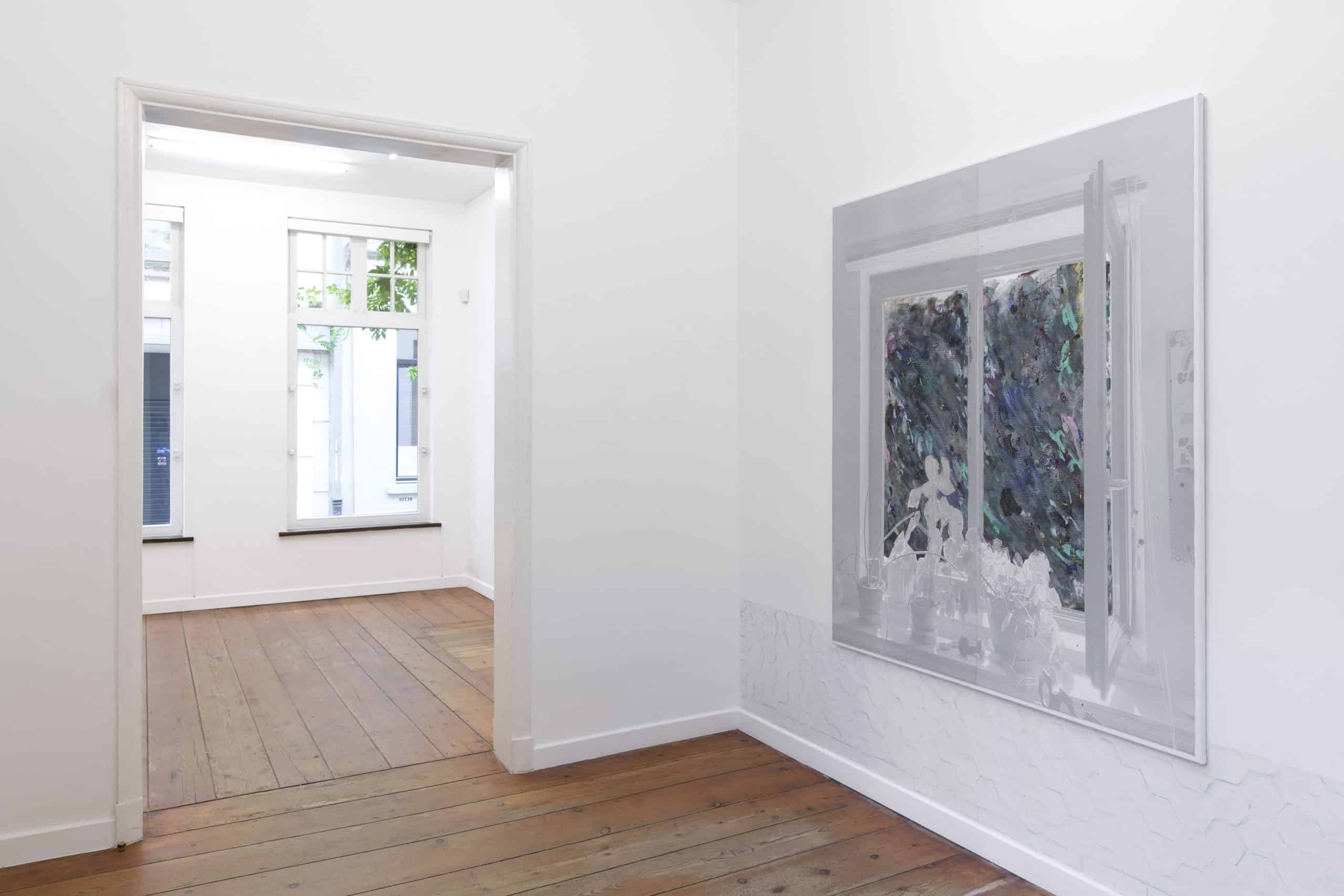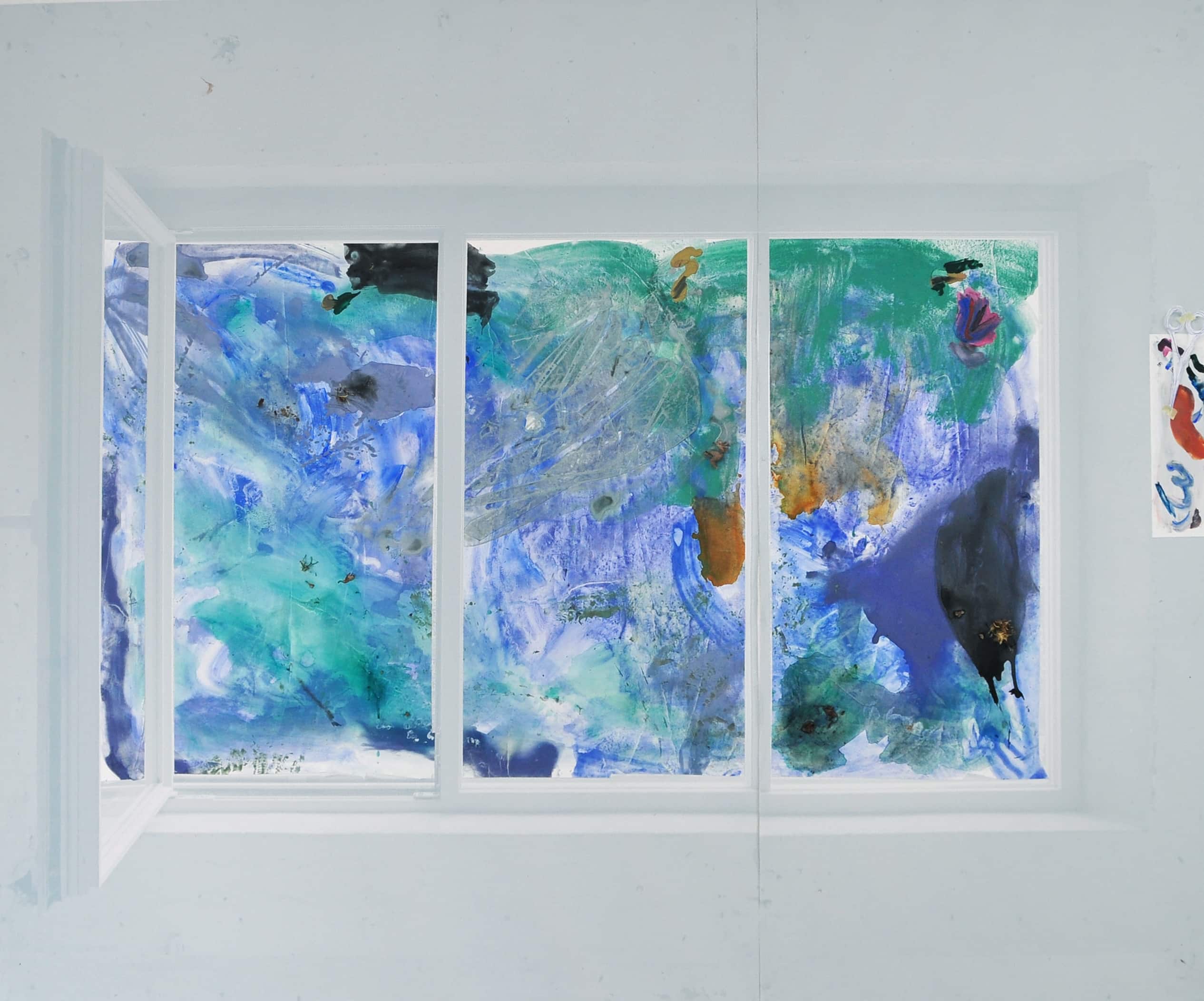For her first solo exhibition in Brussels, Gordon exhibits a recent body of paintings, which are derived from photographs of the interior views of the studios of female artist friends.
Gordon’s chronicling of the spaces where women work belie an ongoing interest in displacing architectural elements within a painterly and installation practice, bringing the ghostly remnants of other spaces into an exhibition context.
In each work, the device of the window turns into a scape of a painterly zone, often made with imprints, spills and organic material. Windows-in-painting historically have been the portal to the flat-ness, non-illusion of painting, and in Portals, Gordon alludes to the use of the window in painting as a space for thinking about an unknown future through un-languaged painterly gesture.
Also included in the exhibition are a small number of alterations: a rubbing of a brick wall installed as a parapet point to the fiction of illusionistic space. A new piece of writing on the weird and painting accompanies the exhibition as a hand-out, and a new series of drawings of ‘Sayings’ add to a multi-vocal display.
Melissa Gordon is an American and British artist based in Brussels. She has shown internationally including recent institutional solo exhibitions Vital Signs, Kunsthall Oslo (2023), Periphery, Extra City Kunsthal, Antwerp (2024), Liquid Gestures, Towner Art Gallery, Eastbourne, UK (2021-2), Manifold Books (2020), and Derivative Value, Kunstverein Luebeck, DE, Routine Pleasures, Vleeshal, Middleburg, NL (2016), Material Evidence, Spike Island, Bristol, UK, as well as group exhibition participations CON10UR Biennial, Mechelen (2023), Hibernus at Frans Masereel Centrum (2024), 10 Women, MuHKA, Antwerp (2023), Cubitt Gallery (2022), Binnenkammers: Biennial of Painting, Museum Dhondt-Dhaenens, BE (2020), Heavy Metal Parking Lot, GARAGE, Rotterdam (2020), Something Stronger Than Me, Wiels, Brussels, BE (2018).
Her recent book of works and collected writings titled “Vital Signs” was published by Occasional Papers and Frans Masereel Centrum in 2023. It follows two monographs: Material Evidence with Sternberg Press in 2013 and Painting Behind Itself in 2016.
Works by Melissa Gordon can be found in institutional and private collections:
MMKA Museum Arnhem, NL, ABN AMRO, NL, ING Bank, NL, Philara Collection, Düsseldorf, Sender Collection, New York, EKARD Collection, The Hague.









